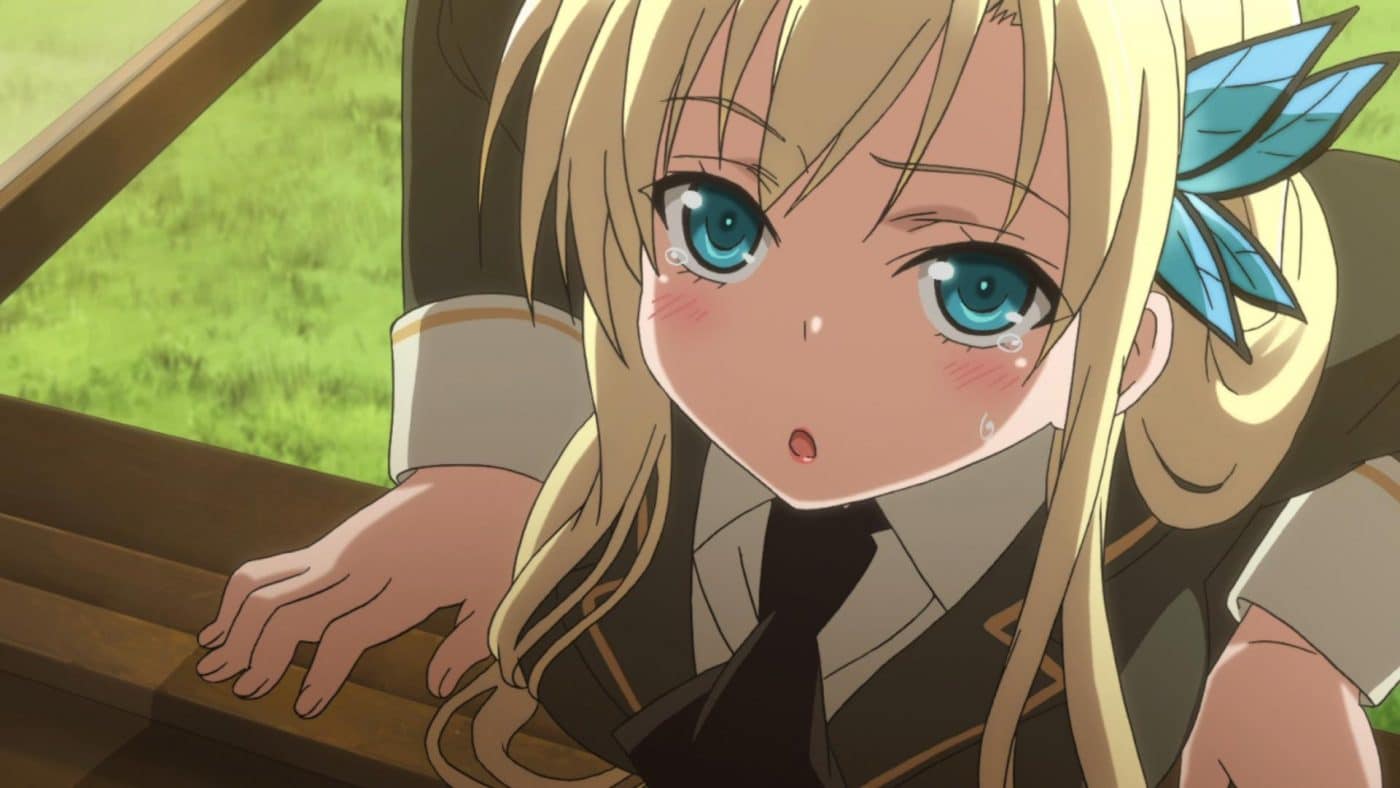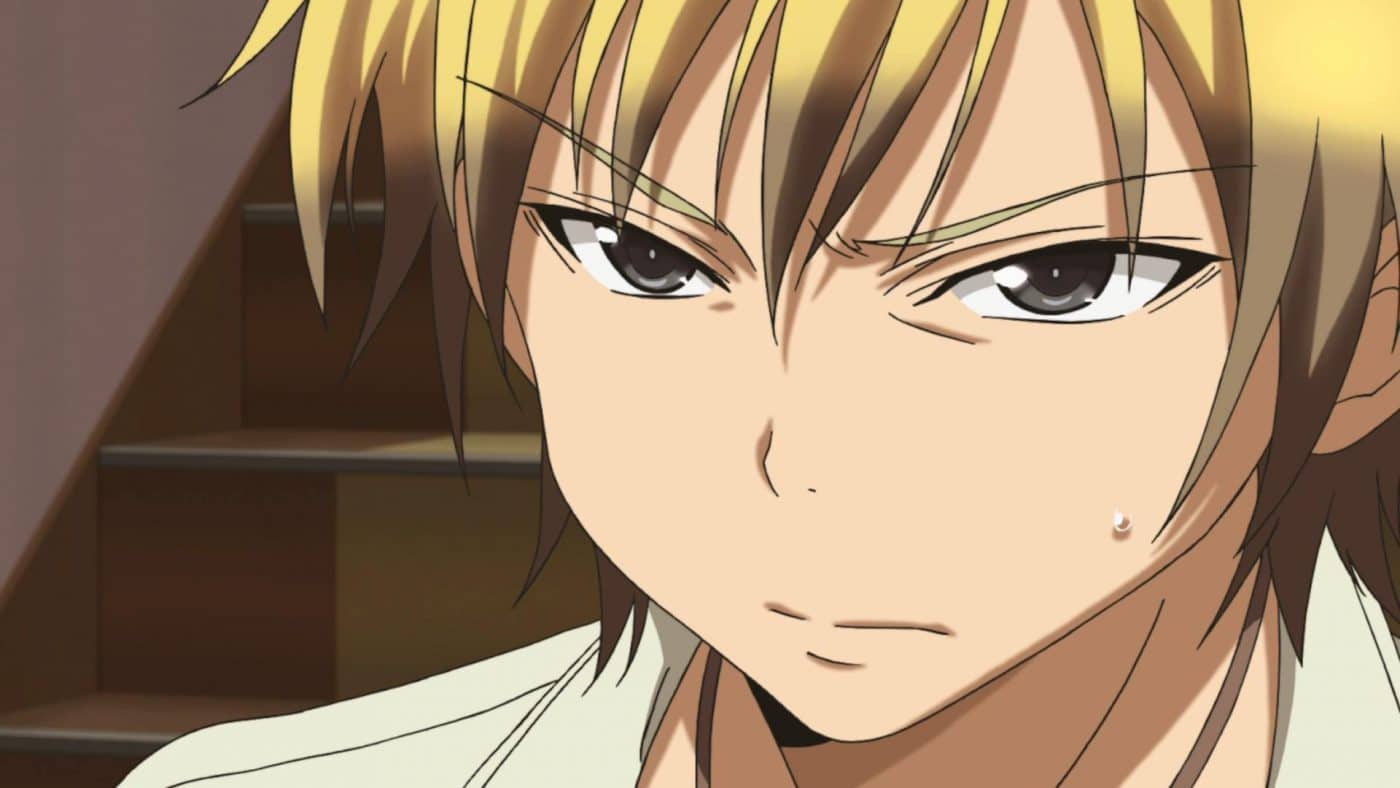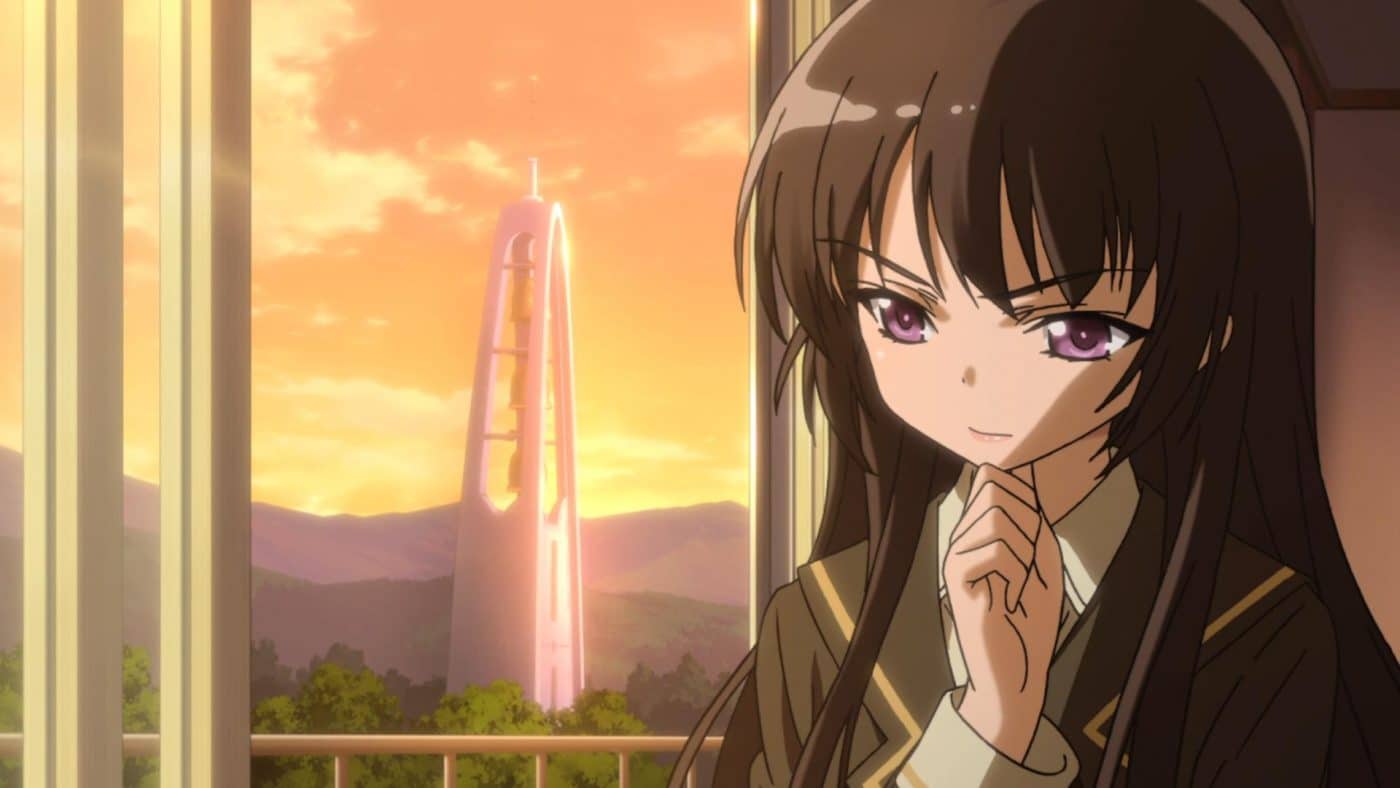Haganai: I don’t have many friends
25 Episodes
2011 (Season 1)
2012 (OVA)
2013 (Season 2)
Alternate Titles
Boku wa Tomodachi ga Sukunai
Haganai
Series Order
Haganai: I don’t have many friends (Physical copy includes OVA)
|
V
Haganai: I don’t have many friends NEXT
Genre
Comedy; Drama; Slice of Life; Romance
Synopsis
Poor Kodaka Hasegawa was born with an unfortunate face and pudding-coloured hair, leading many to believe that he is forever angry with them. His disastrous introduction at his new school means that he still has no friends over a month in. However, he discovers he may not be the only one when he meets classmate Yozora Mikazuki, whose best (and only) friend is made of air. In an effort to learn how to make friends, she decides to create the Neighbor’s Club, and enlists the reluctant Kodaka as the other member. For their first activity, they put out posters advertising their club, fully expecting no turnout. But things take a turn for the surprising when the most popular girl in school (and Yozora’s arch-nemesis) is the first to show up with a genuine desire to join…

Content Advisory
This is not a comprehensive list of every individual use of strong content, merely a guide to show you how extreme it gets and how strong it tends to be. Also, the tags I’ve given each segment (e.g. Very Strong Language) is based on my own system and does not necessarily reflect the tags the BBFC (or other national equivalent) use. According to my system, the ‘Mild’, ‘Moderate’, ‘Strong’ and ‘Very Strong’ adjectives are based on strength, not on volume. Now, obviously, the strength of any type of content is subjective; what I consider strong might just be a relaxing weekend for you. Hence, I have added an explanation for my decision to allow you to make your own informed decision.
Please also note that the ‘colourful’ language I am referring to here is based on FUNimation’s English Dub. The Japanese Dub may (and probably does) differ.
One Scene of Mild Horror
One episode depicts the ghost stories the characters tell. Don’t want to spoil them, but since they’re building to a punchline, they are pretty mild and generic.
Mild Bloody Violence
The ghost stories are the only real source of bloody violence in the show. As mentioned above, it’s played for comedy, and is pretty tame.
If ever there is violence elsewhere in the show, it’s pretty much exclusively used as slapstick.
Mild Sex
Never present between the characters in the show. A couple of scenes show still frames from erotic games, but these have no genital detail and are extremely mild. These are played for comedy.
Moderate Sexualised Nudity
In Season 1, a few scenes depict the bare breasts and nipples on some of its female cast. Not all of it is sexualised, but some of it is.
After season 1, it’s all pretty mild. No nipple detail is ever present when it does depict any. That being said, it should be noted that a number of shots show pantyshots and some are even taken from ‘low angles’, shall we say!
Strong Language
A few uses of ‘fuck’ and ‘shit’ and some terms that are bleeped for comic effect – though it’s fairly obvious what they’re saying!
Mainly uses milder language (i.e. damn, crap, ass, etc.).
Very Strong Sex References
The most extreme stuff is bleeped out for comic effect, but the meaning is pretty clear still.
One character has graphic sexual fantasies (a trait that is played for comedy). Some of these can get pretty spicy!
Most of it is mild to moderate, such as lewd references to breasts and perverted characters. These are fairly common for anime, though.

Reasons to Watch
This is the difficult part. I don’t want you to see this entry as an oversized ‘DON’T WATCH THIS’ post. Equally, I don’t want to influence your opinion with a biased review – there’s a reason this website is called ‘Anime Insights’ and not ‘Anime Reviews’! In this section, I’m going to try to convey to you some of the reasons (in no particular order) that I’ve seen this series’ fans give for enjoying it!
Strong characters with duality and realism (at least, mostly). Most notably, Yozora Mikazuki, who is pretty much a bully, yet is also one of the main heroines of the show.
I have seen this show often praised for its sharp sense of humour. Of course, comedy is subjective, but so is everything in the Reasons to Watch/Barrier of Entry section. The reason I’m mentioning it is because it says something when critics praise a show for a sharp sense of humour as well as its audience.
Barrier of Entry
Rika may not be to everyone’s tastes. Until season 2, she doesn’t really get many dimensions as a character. Before that, she is simply an extremely perverted character. As such, whether you find her funny or not is down to your own sense of humour.
As with many Slice-of-Life series, this one doesn’t really have much of an overarching plot. I’d probably recommend viewing it kind of like a dramatic sitcom; you don’t really watch it for the story, rather for the characters.
The plot-twist in season 1 doesn’t translate well into the anime (i.e. it’s not one you don’t see coming – it’s fairly obvious). This kind of ties in with the previous comment, in that I’d recommend watching it for the characters, rather than the story.
Though this isn’t really a reason not to watch it, I just figured I’d point out the art style change between seasons. Some may find it disconcerting…I suppose…
Personal Bias
I often find that I’m more easily enamoured with a show if someone – or a studio – I like are working on it or when either are trying out something a little different-slash-unusual. Even poor reviews and low expectations can sway me. I figured I should let you know about these biases beforehand, just in case you watch it and think I’ve lead you astray!
If you’ve read other entries on this website (e.g. Prison School), you’ll likely have heard/read me go on about Jamie Marchi’s scripts and how much I love them. This show is where that love for her scripts stemmed from, because this show was the first time I ever cared to look at who had written the English Dub script. I find her use of language brilliant in this show in particular, with the final episode having a scene that gave me the emotional shivers when I first watched it. (Plus, I don’t want to spoil anything, but it’s not easy to maintain Rika’s sense of humour while still presenting her first serious conversation with Kodaka – which is a compliment to both author Yomi Hirasaka and Jamie Marchi.)
Similarly, if you read my entry on A Lull in the Sea, you’ll have heard me mention how much I love Buriki’s character designs. This show is where I discovered my love for their character designs. It’s a show I originally started watching because of the character designs – the fact I enjoyed it as much as I did was an added bonus! Seriously, the amount of Sena Kashiwazaki fanart is insane!

Music
Opening Themes
Zannenkei Rinjinbu★★☆(Hoshi Futatsu Han) by The Neighbor’s Club Girls (Season 1 & OVA)
Be My Friend by The Neighbor’s Club Girls (Season 2)
Ending Themes
Watashi no Ki・mo・chi by Marina Inoue (Season 1)
Kimi wa Tomodachi by The Neighbor’s Club (OVA)
Bokura no Tsubasa by The Neighbor’s Club Girls (Season 2)
Hardcopy Notes
In FUNimation’s physical release, the DVDs are also available in NTSC Region 2 & 4 and Blu-Ray Region B. This means that both the Blu-Rays and DVDs can be played in the UK (unless your DVD Player is really old!) and Australia.
FUNimation’s releases of season 1 also contain the OVA, which is an unaired 13th episode, wherein the club decide to try a round robin story with disastrous results.
Trivia
This is one of only two shows (as of 21/02/2019) that features Tom H@ck doing the music, despite having performed and/or composed the music for many famous anisongs, including Overlord’s ‘Clattanoia’ and Re:ZERO’s ‘Paradisus-Paradoxum’ (which was even nominated for an award at the Newtype Awards). Both songs were performed by groups he performs with (OxT and MYTH&ROID respectively). It’s also worth noting that he did every bit of music in this show, including every opening, ending and insert song.
Staff List
Animation Production: AIC Build
Directors: Hisashi Saito (Season 1); Toru Kitahata (Season 2)
ADR Directors: Zach Bolton (Season 1); Joel McDonald (Season 2)
Series Composition: Tatsuhiko Urahata (Season 1 & Season 2); Yomi Hirasaka (Season 2)
ADR Script: Jamie Marchi (Season 1, OVA & 2), Leah Clark (Season 1, Ep. 7, 10; Season 2, Ep. 3, 5, 8, 10-11), Samuel Wooley (Season 1, Ep. 5, 9, 11), Sean Whitley (Ep. 3); Andy Gay (Season 2, Ep. 2, 7)
Music: Tom-H@ck
Original Creator: Yomi Hirasaka
Original Character Design: Buriki
Animation Character Design: Yoshihiro Watanabe
Chief Animation Directors: Yoshihiro Watanabe (Season 1 & 2), Maki Fujii & Naoto Nakamura (Season 1); Hong Shen (Season 2); Yuka Takashina (Season 2, Ep. 4-5, 8, 12)
Art Directors: Yuka Hirama (Season 1); Aya Kuginuki & Toshihiro Kohama (Season 2)
Lead Voice Actors
Ryohei Kimura as Kodaka Hasegawa
Marina Inoue as Yozora Mikazuki
Kanae Itō as Sena Kashiwazaki
Lead Voice Actors (FUNimation)
Jerry Jewell as Kodaka Hasegawa
Whitney Rodgers as Yozora Mikazuki
Jad Saxton as Sena Kashiwazaki
